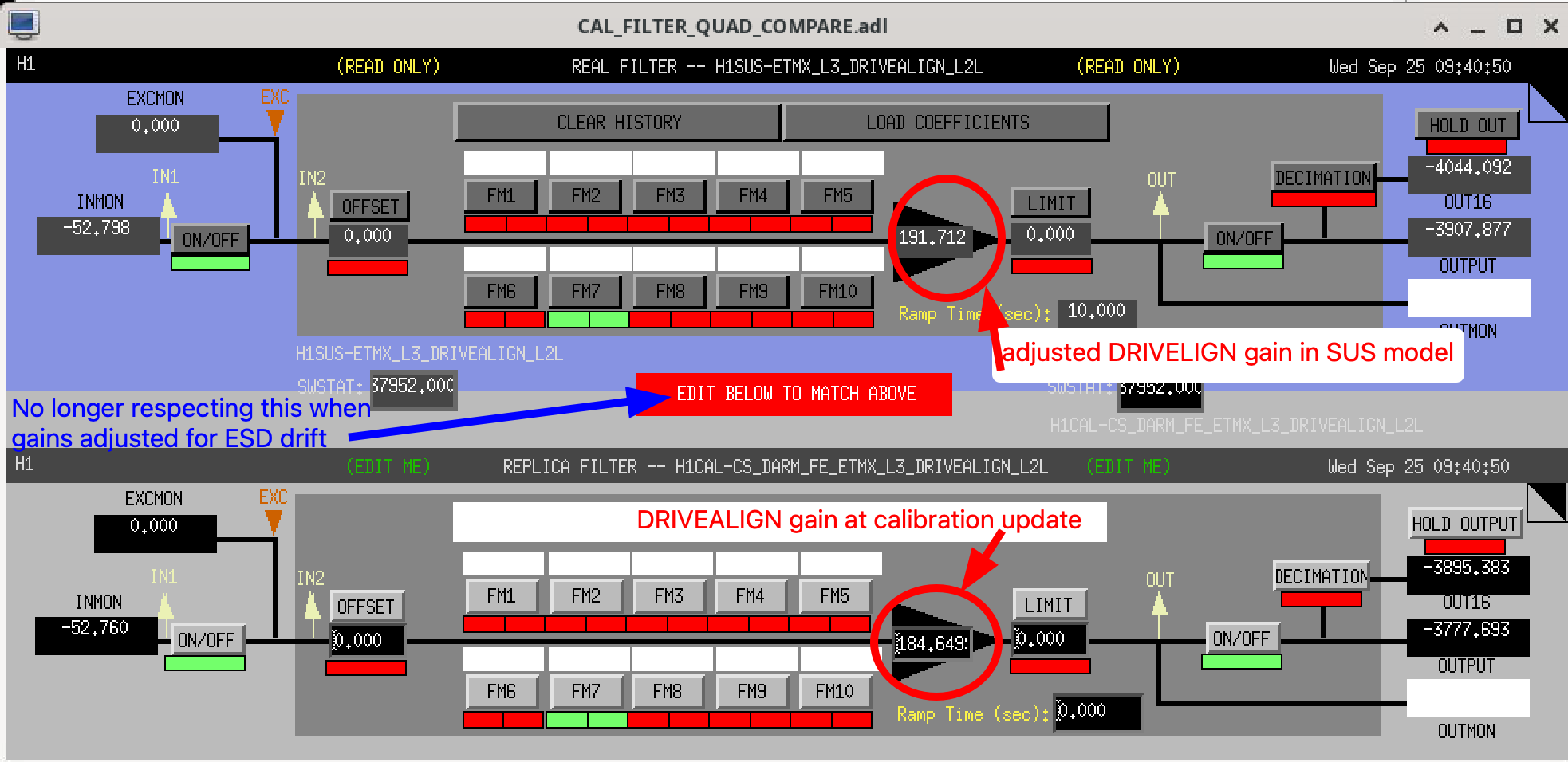pydarm measure --run-headless bb
diag> save /ligo/groups/cal/H1/measurements/PCALY2DARM_BB/PCALY2DARM_BB_20240926T212332Z.xml
/ligo/groups/cal/H1/measurements/PCALY2DARM_BB/PCALY2DARM_BB_20240926T212332Z.xml saved
diag> quit
EXIT KERNEL
2024-09-26 14:28:43,409 bb measurement complete.
2024-09-26 14:28:43,409 bb output: /ligo/groups/cal/H1/measurements/PCALY2DARM_BB/PCALY2DARM_BB_20240926T212332Z.xml
2024-09-26 14:28:43,410 all measurements complete.
anthony.sanchez@cdsws29:
21:30 UTC gpstime;python /ligo/groups/cal/src/simulines/simulines/simuLines.py -i /ligo/groups/cal/H1/simulines_settings/newDARM_20231221/settings_h1_newDARM_scaled_by_drivealign_20231221_factor_p1_asc.ini;gpstime
PDT: 2024-09-26 14:30:05.062848 PDT
UTC: 2024-09-26 21:30:05.062848 UTC
GPS: 1411421423.062848
2024-09-26 21:53:35,296 | INFO | Finished gathering data. Data ends at 1411422832.0
2024-09-26 21:53:36,077 | INFO | It is SAFE TO RETURN TO OBSERVING now, whilst data is processed.
2024-09-26 21:53:36,077 | INFO | Commencing data processing.
2024-09-26 21:53:36,077 | INFO | Ending lockloss monitor. This is either due to having completed the measurement, and this functionality being terminated; or because the whole process was aborted.
2024-09-26 21:53:36,077 | INFO | It is SAFE TO RETURN TO OBSERVING now, whilst data is processed.
2024-09-26 21:53:36,077 | INFO | Commencing data processing.
2024-09-26 21:53:36,077 | INFO | Ending lockloss monitor. This is either due to having completed the measurement, and this functionality being terminated; or because the whole process was aborted.
2024-09-26 22:01:43,741 | INFO | File written out to: /ligo/groups/cal/H1/measurements/DARMOLG_SS/DARMOLG_SS_20240926T213006Z.hdf5
2024-09-26 22:01:43,754 | INFO | File written out to: /ligo/groups/cal/H1/measurements/PCALY2DARM_SS/PCALY2DARM_SS_20240926T213006Z.hdf5
2024-09-26 22:01:43,764 | INFO | File written out to: /ligo/groups/cal/H1/measurements/SUSETMX_L1_SS/SUSETMX_L1_SS_20240926T213006Z.hdf5
2024-09-26 22:01:43,774 | INFO | File written out to: /ligo/groups/cal/H1/measurements/SUSETMX_L2_SS/SUSETMX_L2_SS_20240926T213006Z.hdf5
2024-09-26 22:01:43,784 | INFO | File written out to: /ligo/groups/cal/H1/measurements/SUSETMX_L3_SS/SUSETMX_L3_SS_20240926T213006Z.hdf5
ICE default IO error handler doing an exit(), pid = 2864258, errno = 32
PDT: 2024-09-26 15:01:43.864814 PDT
UTC: 2024-09-26 22:01:43.864814 UTC
GPS: 1411423321.864814
anthony.sanchez@cdsws29:






 Somewhere along the way I updated the TST drivealign gain parameter in the pyDARM model even though I shouldn't have. At this point, I don't recall if I was confused because the two sites operate differently or if I was just running a test and left this parameter changed in the model template file by accident and subsequently forgot about it. In any case, the drivealign gain parameter change made its way through along with the actuation delay adjustments I made to compensate for both the new ETMX DACs and for residual phase delays that haven't been properly compensated for recently (
Somewhere along the way I updated the TST drivealign gain parameter in the pyDARM model even though I shouldn't have. At this point, I don't recall if I was confused because the two sites operate differently or if I was just running a test and left this parameter changed in the model template file by accident and subsequently forgot about it. In any case, the drivealign gain parameter change made its way through along with the actuation delay adjustments I made to compensate for both the new ETMX DACs and for residual phase delays that haven't been properly compensated for recently (


















